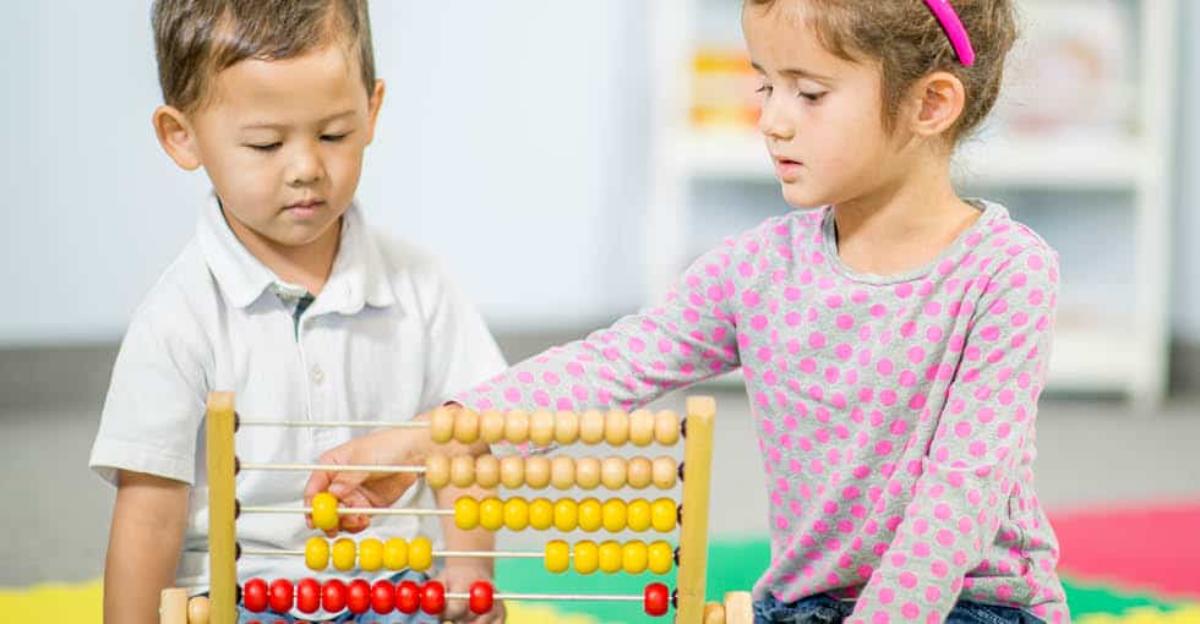There is growing concern in our country regarding a lack of qualified applicants for jobs that require a STEM/STEAM skill set. The need for students with a STEAM skill set has lead to an emphasis on science, technology, engineering and mathematics – with the addition of the arts to promote creative and innovative thinking.
STEAM Education: Math Centers in Pre-K and Early Childhood
We know that it is important to start early, even before a child enters kindergarten, to nurture interests and activities that will spark STEM thinking skills. Research, that shows us brain growth during the first 5 years is critical, also indicates that the brain is particularly receptive to learning math and logic during the preschool years (NACCRRA-1998)
…So what does mathematics look like in preschool?
Math Centers: Manipulatives & Activities
It is the math center/the number nook/counting corner or any other variety of names. We often set aside an area of the classroom for young children to develop math skills by exploring and experimenting with materials. This experiential knowledge base will support understanding of abstract concepts in later years. Children are encouraged to play games and work with manipulatives that build mathematical thinking skills. Hands on experiences with numbers, counting, sequencing, matching, sorting, and classifying can also enhance literacy development and sharpen visual discrimination skills.
Well placed interactive learning centers are the backbone of an effective early learning environment. Observant teachers monitor children’s play and progress so they can add appropriate materials or pose questions that move each child’s learning and understanding forward.
Encouraging Self-Regulated Learning
The physical environment is certainly important, but the teacher can strongly impact a young child’s ability to embrace mathematical thinking skills. Carefully planning math explorations help young children to become self-regulated learners and builds self-confidence. Scaffolding on what each child knows and understands to push learning forward is also the skill set of a good teacher. When a teacher models and encourages children to celebrate and find math imbedded in everyday life, it will go far in starting little learners on the path to seeing math in the world around them. Ask questions that help children think about concepts like:
- Fractions: How many pieces should we cut this pizza into for everyone at the table?
- Relationships: Are these cars all the same size? Which is smallest? Which is largest?
- Classification: Tell me about how you sorted these rocks in your collection.
Math is all around us! Challenge yourself to discover it with young children.
Read More: Benefits of Using Carpets in the Early Childhood Classroom
More Early Childhood STEAM Ideas
If you’re looking for more inspiration to get your pre-K and early childhood learners on the road to developing strong STEAM skills, be sure to stop by the Early Childhood category on our blog or browse through the STEAM & STEM category. You’ll find blogs full of ideas to make this the best year yet.
Ginny Streckewald
Ginny Streckewald, M. Ed., holds a Masters’ degree in Specialty Education focusing on Early Intervention. She has over 35 years of inclusive teaching experience with young children, and has worked closely with premature and developmentally delayed infants and toddlers. Read more posts by Ginny Streckewald –>







Leave a Reply